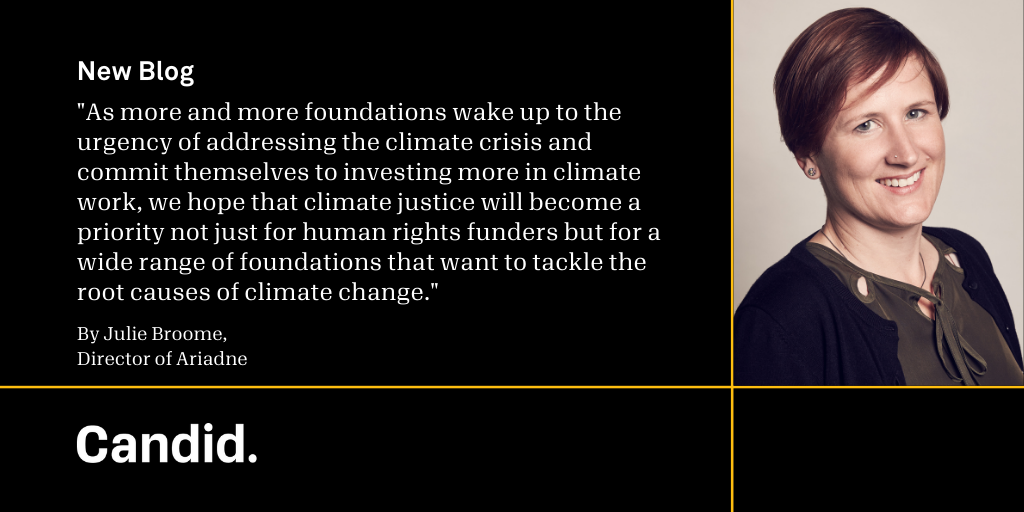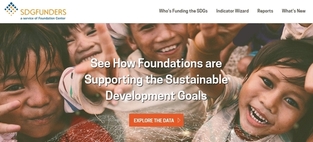A timely resource to guide funders in using a climate justice lens
For so long, climate change has been viewed as the purview of scientific or environmental funders. Funders interested in social issues struggled to recognise climate as an issue relevant to their own portfolios. They were concerned that shifting attention to climate would mean drawing resources away from the other issues they care about, and they wanted to better understand the intersections of climate with their existing work.
The launch of Candid’s new funder’s guide to climate justice, Centering Equity and Justice in Climate Philanthropy, provides a detailed roadmap to help funders develop such understanding. The guide, done in partnership with Ariadne, a network of European foundations supporting social change and human rights issues, came about as a result of input from a pre-pandemic convening. In 2019, Ariadne organised a grant skills workshop for our members focused on funding with a climate justice lens. At the time, many of our members were just starting to think about how they could integrate climate into their work and, while they recognised the climate crisis as an urgent and existential issue, they were not sure how to pivot to addressing climate in the context of their human rights programs.
We invited a few funders working on climate from a justice perspective to share their experience with others, but at the time we struggled to find any resources for funders on what it means to take a climate justice approach to funding or examples of funders who had successfully integrated this perspective into their work. We wished a guide like Candid’s new offering existed then to help inform our conversations and recommendations. We saw a need to capture the learnings of funders who were already deeply immersed in climate work as well as those who had more recently found their way to the topic through work in other areas. Following the event, we turned to Candid to explore the idea of a tool for funders, and the concept for this guide emerged from those discussions.
As more and more foundations wake up to the urgency of addressing the climate crisis and commit themselves to investing more in climate work, we hope that climate justice will become a priority not just for human rights funders but for a wide range of foundations that want to tackle the root causes of climate change. Ultimately, the climate crisis is deeply interconnected with questions of equity, which must be part of the analysis and embedded in the solutions.
As this guide notes, the countries bearing the greatest burden of climate change are often far from the greatest contributors to the crisis. And those most affected often lack the resources to adapt. The nations in the Global North that have produced the most significant levels of carbon emissions have a historic responsibility to shoulder the burden of adaptation and act urgently to address the impacts of the climate crisis globally while addressing their own fossil fuel reliance. However, powerful corporate interests can stand in the way of needed change, while corporations evade responsibility for the damage they have caused to the environment and to communities.
Private philanthropy can make an important contribution to addressing the climate crisis by supporting not only policy advocacy but also the agency of affected communities, including the next generation, to participate in the design of solutions.
We hope this guide, which includes examples of how a range of different types of foundations with different approaches have moved to incorporate climate justice into their work, will be an inspiration to funders and give them the tools to enhance their own grantmaking with a climate perspective. Together, we can have a positive impact on the future of our planet.





